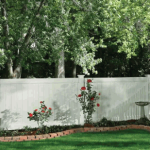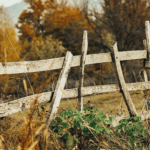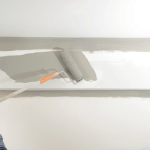When it comes to sprucing up your outdoor spaces, fence paint can be a versatile option—not just for fences but also for garden furniture and outdoor wood paints. This article explores what fence paint is, the different types available, and its suitability for patio chairs and tables, as well as other types of outdoor furniture. It discusses the benefits and potential risks of using fence paint on garden furniture, provides essential preparation steps like cleaning and sanding, and guides you through the painting process. Additionally, you will discover maintenance tips to ensure your newly painted furniture looks great and remains durable for years to come. Get ready to transform your garden with this practical and creative approach, including tips on using wood filler and varnish for a protective finish!
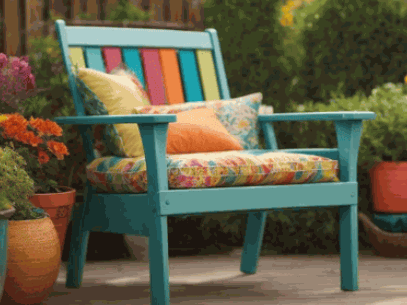
What Is Fence Paint?
Fence paint serves as a specialised protective coating designed specifically for outdoor applications, ensuring that structures such as wooden fences and outdoor furniture maintain their aesthetic appeal and durability against harsh weather conditions.
Whether you are looking to protect your outdoor space from moisture and UV rays or simply want to enhance the appearance of your wood fence or garden furniture, using the right type of fence paint is essential.
The longevity of a fence or garden furniture largely depends on the quality of the paint chosen, as well as the preparation techniques and application techniques employed during the painting process.
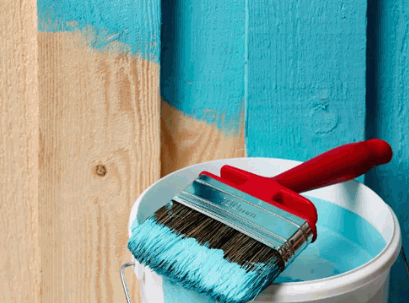
What Are The Different Types Of Fence Paint?
In terms of choosing fence paint, there are several suitable paint types tailored for various materials and weather conditions, including exterior paint, each offering distinct benefits in terms of application and durability.
Among these, oil-based paints and stain-based paints provide a cost-effective solution with excellent moisture resistance, while water-based paints offer easy cleaning and a quicker drying time. Similarly, acrylic fence paints and outdoor wood stains are popular for their UV protection and enhanced appearance, making them excellent choices for protecting your outdoor space effectively.
Oil-based Fence Paint
Oil-based fence paint is a preferred choice for many homeowners due to its cost-effectiveness and durable protective coating properties, which effectively guard against moisture damage and other harsh weather conditions, including temperature changes.
This type of paint penetrates the wood surface better than others, providing a long-lasting finish that can withstand temperature changes, UV protection, and moisture damage.
One of the most notable benefits of using this paint is its capacity for moisture protection, which helps prevent rot and decay over time—essential for maintaining the integrity of wooden fences and garden furniture. The longevity of oil-based finishes can significantly reduce the need for frequent maintenance and repainting.
- Application Techniques: Proper surface preparation is crucial; ensuring the fence is clean and free from previous coatings will enhance adhesion.
- When applying, a high-quality brush or paint sprayer can deliver an even layer, allowing for better penetration into the wood.
- It is advised to apply during dry conditions to avoid issues with drying time and effectiveness.
These paints are suitable for a variety of surfaces, including untreated and previously stained wood, metal, and plastic, making them a versatile option for enhancing outdoor aesthetics while providing real protection against the elements.
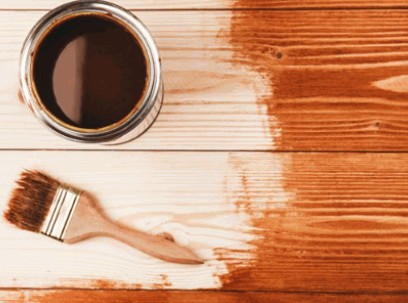
Water-based Fence Paint
Water-based fence paint is known for its ease of application and quick drying time, making it an ideal choice for those who want a hassle-free painting experience, whether they are DIY enthusiasts or professionals alike. This type of paint is not only environmentally friendly but also allows for cleaning and sanding of the surface with ease, facilitating better adhesion and a smoother finish. By selecting water-based options, homeowners can enjoy the benefits of vibrant colours that retain their lustre longer and are cost-effective.
In terms of application techniques, water-based fence paint can be effortlessly rolled, brushed, or sprayed on, making it accessible for both DIY enthusiasts and professionals alike. In comparison to oil-based counterparts, this type dries faster and emits far fewer fumes, creating a safer atmosphere during the painting process.
- Surface Preparation: Ensuring the surface is clean is crucial. Remove dirt, mould, or previous paint by washing with soapy water or a pressure washer.
- Allow sufficient drying time before applying the water-based paint to avoid trapping moisture.
- Sand rough areas lightly to promote better adhesion.
Ultimately, these meticulous preparation steps lead to a professional-looking finish that is less prone to issues like chipping and fading.
Check out: What Is Vinyl Fencing

Acrylic Fence Paint
Acrylic fence paint stands out for its vibrant colour retention and UV protection, making it an excellent choice for both fences and outdoor furniture exposed to direct sunlight. Products like Cuprinol Garden Shades and Rust-Oleum Garden Paint are popular choices among homeowners. This type of paint dries quickly and provides a flexible, weather-resistant finish that enhances the overall appearance of outdoor spaces.
The unique characteristics of acrylic fence paint extend beyond mere aesthetics; its formulation allows it to adhere smoothly to a variety of surfaces. Whether applied on wood, vinyl, or metal, this versatile paint ensures a durable bond, preventing chipping, peeling, and flaking over time. Its rapid drying time means outdoor projects can be completed swiftly, reducing downtime and allowing for immediate use. Brands like Zinsser AllCoat and Osmo UV Protection Oil are known for their durability and efficiency.
- When selecting shades, consider the surrounding landscaping and architectural style to achieve a harmonious look.
- Choosing a satin or semi-gloss finish may enhance durability while offering a modern touch.
The UV protection offered by this paint safeguards against fading, ensuring the vibrancy of colours remains intact for longer periods. By opting for this innovative product, homeowners can achieve both functional and aesthetic enhancements to their outdoor spaces.
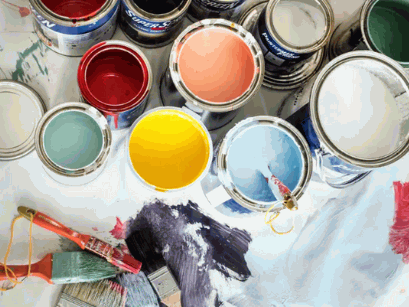
Can You Use Fence Paint On Garden Furniture?
Using fence paint on garden furniture is a topic that raises questions regarding material compatibility and the best practices for achieving a protective finish without the risk of peeling and flaking. Many homeowners may find that the robust nature of fence paint can provide a durable layer of defence against the outdoor elements, extending the life of their outdoor furniture significantly, whether it is made of wood, metal, or plastic.
However, it is important to consider the material compatibility and specific preparation techniques required to ensure optimal results.
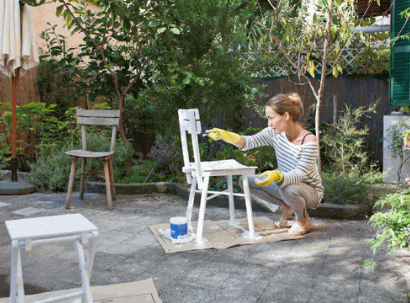
Benefits Of Using Fence Paint On Garden Furniture
The benefits of using fence paint on garden furniture are numerous, including enhanced appearance and prolonged longevity of the furniture despite exposure to harsh weather conditions.
By applying a protective coating of fence paint, homeowners can ensure that their outdoor pieces resist moisture and UV rays, thus minimising the chances of deterioration. Outdoor wood stains and protective coatings further enhance this protection.
Opting for fence paint not only safeguards the furniture but also enhances its visual appeal, transforming a weathered look into a vibrant touch that boosts the overall aesthetics of the garden space. Proper painting techniques can make a significant difference in achieving the desired look. For instance, a once-dull wooden bench can gain a fresh look with a quick coat of brightly coloured paint, making it a focal point in the garden. Using suitable paint types like those from Cuprinol Garden Shades can provide vibrant and lasting results.
- Protection against moisture penetration helps prevent mould and mildew growth, which are common issues for outdoor furniture.
- UV protection keeps colours from fading, ensuring that the furniture maintains its attractive appearance for years.
- Using fence paint is also cost-effective, as it extends the life of the furniture, reducing the need for replacements.
When applying the paint, it’s advisable to prepare the surface by cleaning it thoroughly and ensuring it is dry and to use a primer for better adherence. These simple steps can significantly enhance the longevity and vibrancy of the garden furniture.
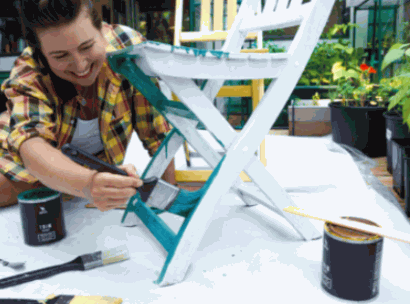
Risks Of Using Fence Paint On Garden Furniture
While there are advantages to using fence paint on garden furniture, it is also important to recognise the risks involved, particularly concerning material compatibility, which may lead to issues such as peeling, flaking, and moisture damage over time. Different materials, such as wood, metal, or plastic, may not respond well to specific types of fence paint, emphasising the importance of selecting suitable paint types for each furniture material.
Using paint not designed for outdoor furniture can create challenges not only in aesthetics but also in durability. For example, using paint unsuitable for metal can result in rust, while inappropriate paint for plastic can cause the breakdown of components. For instance, if improperly applied, the paint might accumulate moisture, leading to rust on metal surfaces or the breakdown of plastic components. To mitigate these risks, consider using specific products like Rust-Oleum Garden Paint for metal and plastic surfaces.
- To mitigate these risks, it is advisable to conduct a compatibility test on a small area before proceeding with full coverage.
- Maintaining furniture by cleaning it regularly and reapplying protective coatings, such as varnish or wood filler, can extend its lifespan.
- Choosing high-quality paints specifically formulated for outdoor use can also enhance adherence and durability.
By taking these precautions, one can enjoy the benefits of painted garden furniture while minimising potential issues.
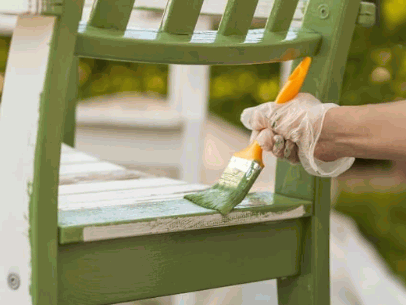
How To Prepare Garden Furniture For Painting?
Preparing garden furniture for painting is crucial to achieving a long-lasting and attractive finish that can withstand the elements. Proper preparation techniques, such as cleaning, sanding, and priming, will enhance the adhesion of the paint and help prevent future issues like peeling and flaking. Proper preparation techniques, such as cleaning, sanding, and priming, will enhance the adhesion of the paint and help prevent future issues like peeling and flaking.
These steps ensure that the surface is ready to receive the protective coating, maximising the longevity of the paint job by protecting it from UV rays and weathering.
Cleaning The Furniture
Cleaning the furniture thoroughly is the first step in the preparation process, as it removes dirt, grime, and any moisture that may interfere with the adhesion of the paint. Using a paint sprayer can help reach intricate details and ensure an even clean, making it easier for the fence paint to bond effectively to the surface.
To achieve the best results, you will want to consider the right cleaning solutions, such as a mixture of warm water and mild washing-up liquid. Alternatively, using a product like Cuprinol Garden Shades can help in cleaning effectively. Alternatively, a specialised outdoor furniture cleaner can effectively tackle tough stains. Here’s a quick guide on how to clean your garden furniture:
- Start by rinsing the furniture with water to remove loose dirt.
- Apply your chosen cleaning solution using a soft cloth or sponge, paying attention to any crevices and joints.
- Rinse thoroughly with clean water to remove all soap residue.
- Allow the furniture to dry completely before proceeding to the sanding phase.
Ensuring the surface is dry and free of contaminants is crucial to avoid any peeling or uneven finishes later on. Taking these preliminary steps will significantly enhance the longevity of your paint job.
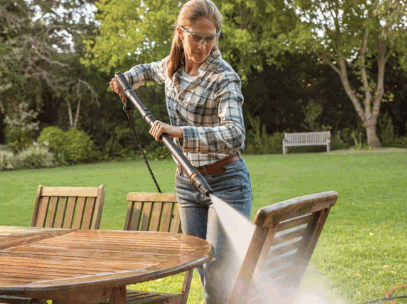
Sanding The Furniture
Sanding the furniture is a vital step in surface preparation that helps to create a smooth texture for better paint adhesion and to remove any previous peeling or flaking layers.
This process not only improves the surface quality but also allows the fence paint to penetrate deeper into the wood or other materials for a more durable finish. Using products such as Rust-Oleum Garden Paint can enhance the paint’s effectiveness.
To achieve the finest results, it’s essential to select the appropriate sandpaper, which typically ranges from medium to fine grits, such as 120 to 220. Begin with a coarser sandpaper to eliminate rough spots and imperfections, and follow up with a finer grit to polish the surface.
- Work in the direction of the wood grain to avoid scratches.
- For intricate areas, a sanding sponge can provide better control.
- Don’t forget to wipe down the furniture with a damp cloth afterward to remove dust and debris, ensuring a clean base for paint.
This meticulous sanding process significantly enhances the paint’s ability to adhere efficiently, ultimately elevating the quality and lifespan of your garden furniture.
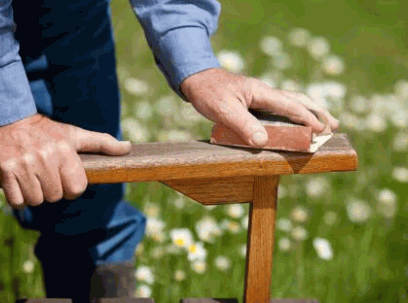
Priming The Furniture
Applying a primer to the garden furniture is an essential step that can greatly enhance the effectiveness of the paint, as it provides a uniform surface and additional adhesion for the fence paint. Priming also adds an extra layer of protection against moisture damage and improves the longevity of the final coat.
To achieve the best results, selecting the right primer based on the furniture material is crucial. For example, metal garden furniture benefits from rust-inhibiting primers that prevent corrosion, while wooden pieces should be treated with water-based primers that help in sealing the grain. Plastic surfaces might require a specially formulated bonding primer designed to help paint adhere better. This ensures a durable and long-lasting finish that withstands the elements.
- For metal, look for anti-rust or galvanising primers.
- When working with wood, opt for oil-based or water-based primers.
- For plastic, ensure the primer is designed for non-porous surfaces.
Taking these precise steps not only enhances the aesthetics of outdoor spaces but also contributes to a more sustainable approach by prolonging the need for maintenance and repainting.
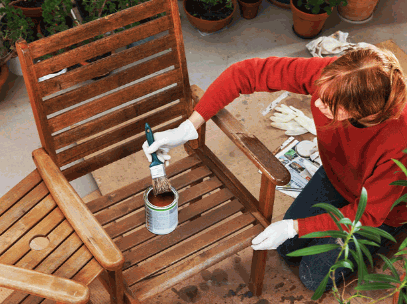
Steps To Paint Garden Furniture With Fence Paint
Painting garden furniture with fence paint requires careful attention to detail, as the proper steps can significantly impact the overall finish and durability of the project.
These steps include:
- Selecting the right paint
- Applying the first coat
- Allowing time for it to dry
- Applying a second coat for complete coverage
- Adding finishing touches to achieve a polished look
Adhering to correct application techniques ensures that your outdoor furniture looks great and stands the test of time.
Choosing The Right Paint
Choosing the right paint is a critical step in the process, as various suitable paint types cater to different materials and intended uses for outdoor furniture. Whether you opt for oil-based, water-based, or acrylic fence paint, ensuring material compatibility is essential for achieving the desired results and longevity of your painted furniture.
When selecting paint for garden furniture, several factors come into play that can significantly impact both appearance and durability. For instance, it is important to consider the environmental conditions to which your furniture will be subjected, such as exposure to sun, rain, and temperature variations. Each type of paint interacts differently with these elements; some wear better against UV rays, while others may resist moisture more effectively. The intended finish should be considered—whether a glossy sheen or a matte texture is preferable can influence the choice of paint.
- Material Compatibility: Ensure the paint is suitable for the specific material, whether it is wood, metal, or plastic.
- Environmental Considerations: Opt for paints that offer UV protection and moisture resistance.
- Finish Preference: Decide between a sleek gloss, a subtle satin, or a rustic matte finish.
Matching paint types to specific projects can often enhance the overall aesthetic and functionality of outdoor spaces, making furniture not only look appealing but also last for years to come. Consider using paints like Rust-Oleum Garden Paint or Zinsser AllCoat to ensure durability.
Applying The First Coat
Applying the first coat of fence paint is a crucial stage that sets the foundation for the final finish, and it is important to use the correct application technique for even coverage. Whether using a brush, roller, or paint sprayer, ensuring that you apply the paint evenly and avoid drips will enhance the protective coating and aesthetic appeal of your garden furniture.
To commence, prepare the workspace by laying down dust sheets to catch any splatters.
Starting with the edges of the fence, use a brush for precise application, which is essential for corners and details. Next, utilise a roller for larger surfaces, working in sections to maintain a wet edge, preventing lap marks. If opting for a paint sprayer, keep a consistent distance from the surface to ensure an even layer.
- For best results, apply the paint lightly, layering it gradually rather than overloading the brush or roller.
- Take your time to check for drips and smooth them out immediately with your brush.
Remember, allowing adequate drying time between coats is vital; it ensures the paint adheres properly and prevents any peeling in the future. A gap of at least 24 hours is recommended for optimal results.
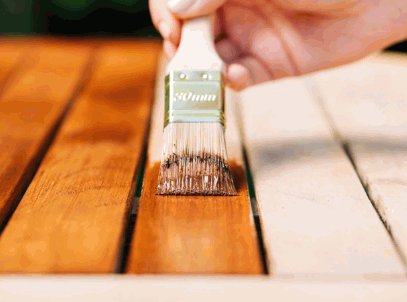
Applying The Second Coat
Once the first coat is dry, applying the second coat is essential for achieving full protection and depth of colour, which will effectively shield your outdoor furniture from moisture damage and UV rays. This step not only enhances the overall finish but also ensures a durable protective finish that can withstand the elements.
Applying a second coat is often crucial for anyone looking to prolong the life of their furniture and maintain its aesthetic appeal. By choosing the right timing, ideally waiting around 24 hours after the first coat, you allow the base layer to cure adequately. This also maximises adhesion for a stronger bond.
When applying the second coat, use smooth, even strokes to create a seamless finish. It is especially important to focus on areas that are more susceptible to wear and tear, as these will benefit from the additional layer of protection.
- Ensure the area is well-ventilated to prevent the build-up of fumes.
- Consider using a high-quality brush or roller suitable for the type of paint or stain used.
- Be mindful of the weather conditions, as extreme heat or humidity could affect drying times.
Ultimately, this diligent approach not only enhances the visual appeal but also fortifies your outdoor items against harsh environmental factors, making the second coat a necessity for optimal durability.
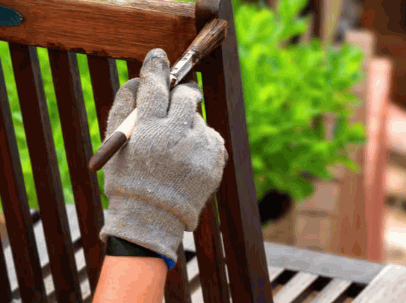
Finishing Touches
Adding finishing touches to your painted garden furniture can greatly enhance its appearance and prolong its protective qualities, ensuring it remains a beautiful feature in your outdoor space.
This includes checking for any missed spots, applying touch-ups if needed, and considering a protective coating that can further shield the paint from wear and tear.
Once the furniture is fully painted, the focus should shift to meticulous final inspections. This step is critical; missed areas can detract from the overall aesthetic and compromise the furniture’s durability. A few simple steps can make all the difference:
- Carefully examine every surface to identify areas that may need additional paint.
- Utilise a small brush or a foam applicator for precise touch-ups, ensuring an even finish.
- After achieving the desired look, consider applying a protective coating, such as polyurethane, Osmo UV Protection Oil, or a specialised exterior sealant, that will guard against UV rays and moisture. This applied layer acts as a shield, significantly preventing peeling and fading from exposure to UV rays and other elements.
To maintain that vibrant look over time, regular cleaning with a soft cloth and mild soap is recommended. Promptly address any scratches or chips with touch-up paint, which can make a remarkable difference in preserving the charm of the garden furniture.
How To Maintain Garden Furniture Painted With Fence Paint?
Maintaining garden furniture painted with fence paint is essential for preserving its appearance and structural integrity over time. Regular cleaning is key to preventing dirt accumulation and the potential for peeling and flaking, while promptly touching up any chips or scratches helps maintain the protective finish and enhances the overall longevity of the furniture.
Regular Cleaning
Regular cleaning of garden furniture is crucial to maintaining its appearance and ensuring that the protective coating remains effective against moisture, dirt, and UV protection. Utilising gentle cleaning solutions and soft brushes will help preserve the integrity of the paint while keeping the furniture looking fresh.
To achieve long-lasting results, it is essential to adopt a systematic approach to cleaning. Start by dusting off the surfaces with a soft cloth or brush to eliminate loose debris. Then, consider using a mixture of mild soap and water, as harsh chemicals can lead to detrimental effects on painted surfaces. An ideal choice would be biodegradable cleaning products that are gentle yet effective in removing grime. For instance, Cuprinol Garden Shades and Rust-Oleum Garden Paint are excellent products that are both eco-friendly and offer UV protection.
- Avoid ammonia-based cleaners which can strip paint.
- Opt for natural solutions like vinegar and water as an eco-friendly alternative.
- Rinse thoroughly and dry completely to prevent water spots.
By following these practices, not only can one protect the furniture’s finish, but also prolong its life, ensuring it remains an attractive addition to the garden.
Touching Up Any Chips Or Scratches
Touching up any chips or scratches on your garden furniture is essential for maintaining both its aesthetic and protective qualities, as neglecting these minor blemishes can lead to peeling and flaking over time. A quick application of the same fence paint or Zinsser AllCoat can restore the finish and help ensure the longevity of the furniture.
Promptly addressing small damages is crucial, as even tiny imperfections can compromise the overall integrity of the furniture. When these small issues are left unattended, they can exacerbate into larger problems that may require more extensive and costly repairs. To effectively touch up painted surfaces, it is advisable to follow a few essential steps:
- Materials Needed: Gather a clean cloth, sandpaper (fine grit), the same colour as fence paint, a paintbrush, and a clear top coat for added protection.
- Preparation: Start by cleaning the surface with a cloth to remove any dirt or debris.
- Sand the Area: Carefully sand down the chipped or scratched area to create a smooth base for the new paint.
- Application: Using the paintbrush, apply a thin layer of the matching fence paint, ensuring it blends seamlessly with the existing finish.
- Top Coat: Once dry, consider applying a clear top coat for extra durability.
By following these techniques, the furniture will not only look appealing but also be well protected against the elements, ultimately prolonging its life.



